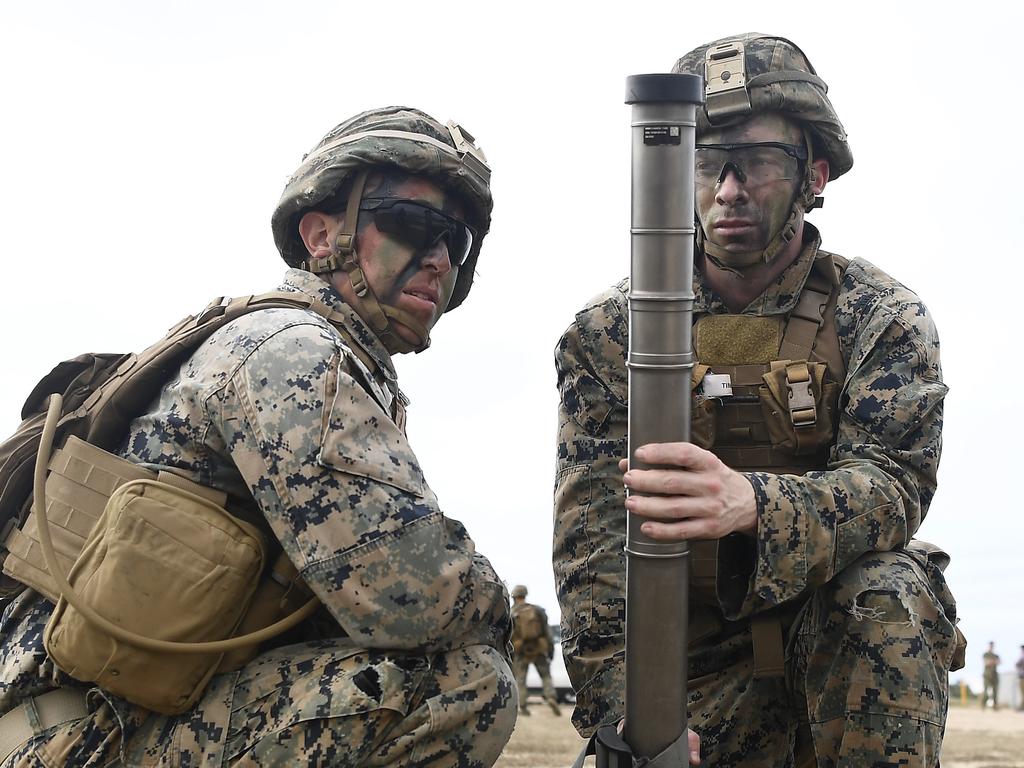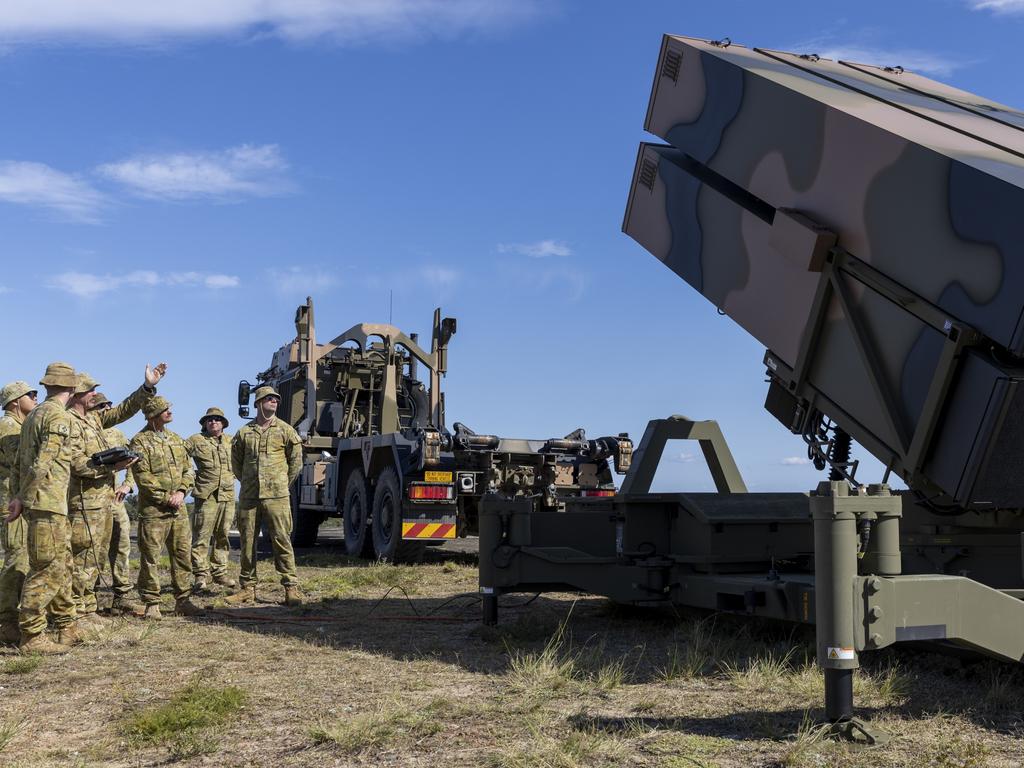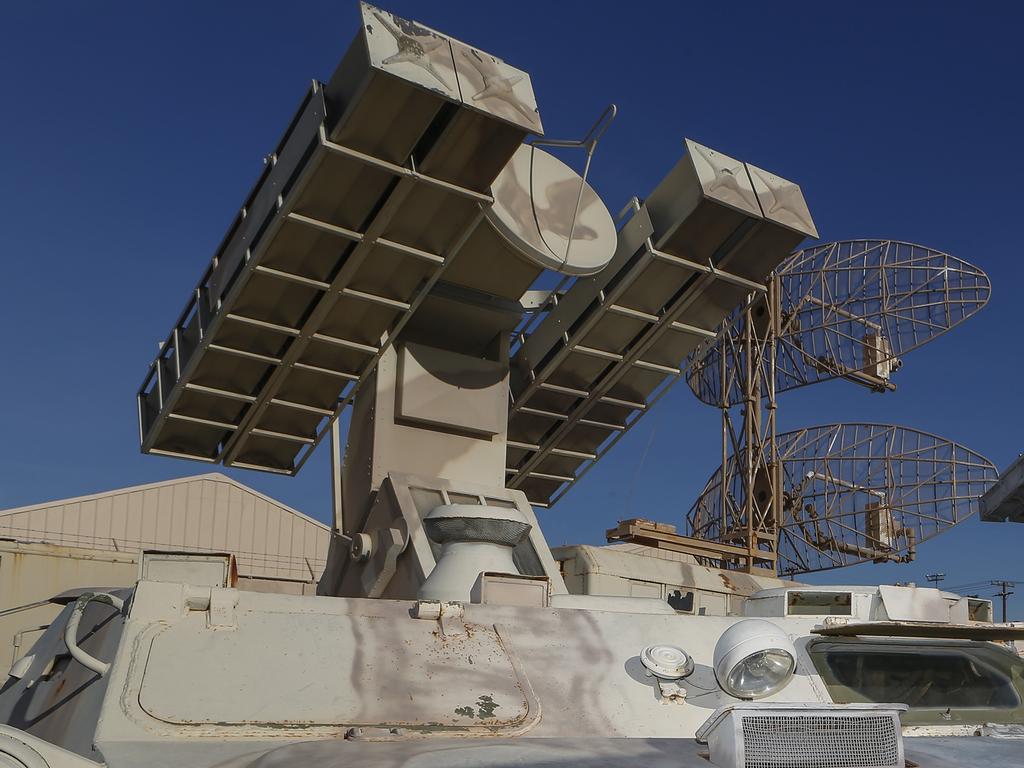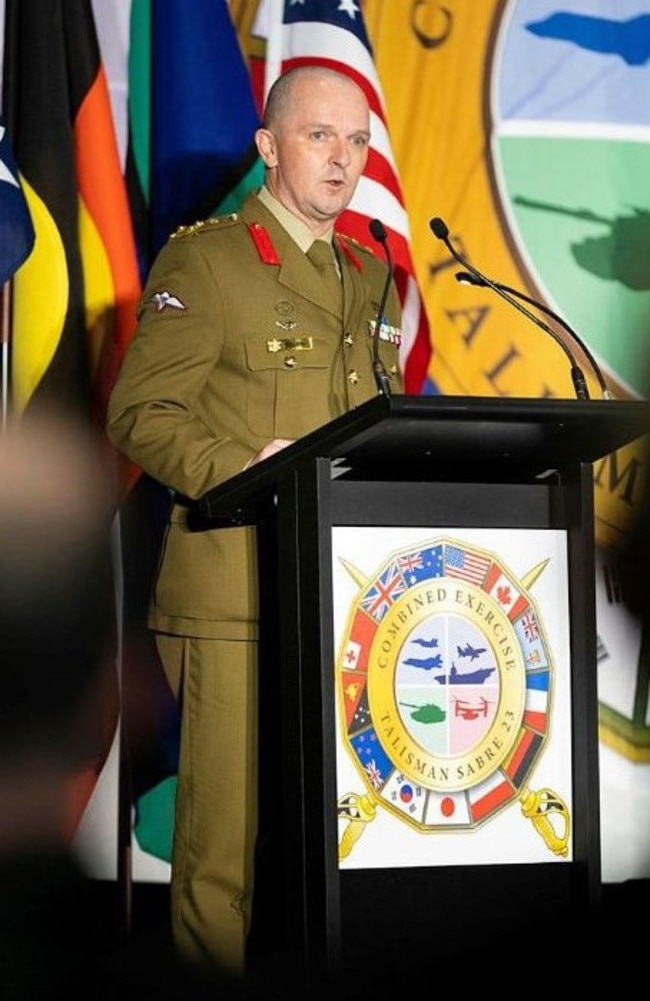Army to debut High Mobility Artillery Rocket Systems at record breaking Talisman Sabre 2025
The Australian Defence Force is preparing to show off the nation’s new long-range missiles during the largest military exercise in the southern hemisphere in July.
The Australian Army is set to demonstrate its strengthened firepower for the first time during the largest military exercise in the southern hemisphere in July.
Hosted mostly in Queensland, Exercise Talisman Sabre 2025 will see soldiers firing Australia’s new High Mobility Artillery Rocket Systems (HIMARS) and National Advanced Surface-to-Air Missile System (NASAMS) bought following the Federal government’s 2023 Defence Strategic Review.
The debut of the recently acquired Australian Defence Force-owned missiles will be among several ‘firsts’ scheduled for the 11th iteration of Exercise Talisman Sabre, Australia’s largest biennial, joint military training exercise with the US.
Others include additional live fire activities, some of the training being held overseas and a British warship making its inaugural visit to Australia.
Exercise Director Brigadier Damian Hill, 50, said the increase in live fire training would be one of the main focuses for TS25.
“We have some firsts coming up which we’re really excited about,” he said in April.

Bilaterally designed between Australia and the US, Talisman Sabre is multilaterally planned and executed.
It has become the ADF’s largest multinational, multi-service training exercise after starting out as a bilateral collaboration with the US in 2005, with the mock war games then mostly held at the military’s 454,500 hectare Shoalwater Bay training area in Byfield, about 80km north of Rockhampton in Central Queensland.
Scheduled from July 13-August 4, TS25 will comprise more than 30,000 military service members from a record 23 countries, including three observers.
Field training, force preparation activities, amphibious landings, ground force manoeuvres, maritime and air combat operations as well as live fire exercises will occur throughout Queensland, parts of the Northern Territory, New South Wales, Victoria, Western Australia and – for the first time – on Christmas Island and in Papua New Guinea.
Brigadier Hill, who was also TS23 exercise director, said a greater focus would be placed “on missiles and long range assets” this year.
“Traditionally, we’ve only done one (live fire exercise) in Shoalwater Bay, but we are now running four to five different live fire exercises, and not just at Shoalwater Bay,” he said.

Despite the additional live firing training planned for around the country, Brigadier Hill said the biggest demonstration would still be held at the ADF’s 454,500 hectare Shoalwater Bay training area in Byfield, about 80km north of Rockhampton in Central Queensland.
“It will be even bigger this year because … a key modernisation milestone will come to fruition during the live fire exercise in Shoalwater Bay,” he said.
The former artillery officer said soldiers would fire the ADF’s newly acquired M142 HIMARS for the first time during TS25.
“(In TS23) They fired only American HIMARS. This will be an Australian one crewed by Australians firing that system,” he said.
“The new 10th Brigade will participate in Talisman Sabre for the first time.
“They own the HIMARS capability through the 16th Regiment, so the 10th Brigade will support the live firing of HIMARS.”
The first two of 42 HIMARS launchers bought by the ADF arrived in Australia from the US in March and are based at the 10th Fires Brigade in Adelaide.
The Federal Government announced $1.6 billion to accelerate and expand the acquisition of HIMARS launcher vehicles two years ago in response to the DSR, an independent review of the ADF’s structure, capabilities and force posture.

It resulted in a blueprint for the nation’s future strategic policy, defence planning and resourcing.
A key finding was that the ADF must have the capacity to deter or deny any adversary’s attempt to project power against Australia.
Improving the defence force’s ability to strike longer-range targets was one of six priority areas identified and earmarked for immediate action.
Originally disbanded in 1942, the 10th Brigade was recently re-established as part of the recommended ADF restructuring, which sees the Army moving from having generalist to specialist combat brigades.
The 10th Brigade soldiers are responsible for the army’s long-range strike and missile defence capabilities and, with HIMARS, now have the ability to strike land and maritime targets more than 500km away.
An artillery rocket platform that carries six Guided multiple launch rocket system rockets, two Precision Strike Missiles or one Army Tactical Missile System missile, the M142 HIMARS missile launcher can fire guided missiles in quick succession while also being able to be moved and reloaded in minutes.

Mounted on a truck, HIMARS is a mobile, long range, strike rocket system can also be loaded and offloaded onto ships or aircraft.
Brigadier Hill said firing the HIMARS would set an example.
“It demonstrates a capability,” he said.
“It’s a milestone that demonstrates we’re able to run a live fire event, with trained Australian gunners using live firing platforms, that have only just arrived in the country.
“That sets us up to grow that capability in the coming years.
“Using Talisman Sabre as a modernisation milestone is not something we’ve always done and it’s great to have the exercise capability at modernisation.”
The Canberra-based officer said 16th Regiment, Royal Australian Artillery gunners, part of the 10th Brigade, also plan to deploy their NASAMS.
“We’ve had the system in service a 12 months. We’ll be working alongside the Americans with their patriot system and doing a combined live fire,” he said.
Earlier this month, US Army Pacific Commanding General, Ronald Clark, said the Hawaii-based Third Multi-Domain Task Force (3rd MDTF) would work alongside the 10th Brigade.
“The 3rd Multi-Domain Task Force alongside of the Australian 10th Brigade is going to conduct some significant live fire activity with long-range precision fires in a way that we just haven’t done before with the Australian Defence Force,” he said.

“So we’re really excited about that opportunity just based on … our ability to work on these things in times of relative peace and during competition.”
Japan Self-Defense Force gunners will also fire one of their Type 12 surface-to-ship missiles (Type 12 SSM) during another live firing event at the Beecroft Weapons Range and Peninsula, near Jervis Bay, NSW.
Brigadier Hill said Japan demonstrating the SSM’s capability – which they first did in Australia during TS23 – was “critical.”
“That’s a pretty critical activity for us as it helps us work out how we do interoperability with live fire agreements,” he said.
“It helps continue that relationship that effectively has grown through the Reciprocal Access Agreement that we signed.”
The Australia-Japan Reciprocal Access Agreement, which took effect in 2023, is a landmark treaty between the Australian and Japanese governments that provides a framework for each nation’s forces to operate in the other country.

Brigadier Hill said another live firing exercise was planned for the NT’s Bradshaw Field Training Area, about six hours south of Darwin, while members of the US and Canadian Armed Forces planned to fire missiles offshore over Queensland’s Coral Sea.
The Republic of Singapore’s Armed Forces will also bring a HIMARS detachment to TS25 for the first time, along with CH-47F Chinook helicopters and additional support personnel.
Besides the US, allied nations participating in TS25 include Canada, Fiji, France, Germany, India, Indonesia, Japan, the Netherlands, New Zealand, Norway, Papua New Guinea, the Philippines, the Republic of Korea, Singapore, Thailand, Tonga, and the United Kingdom.
Representatives from Brunei, Malaysia and Vietnam are scheduled to attend as first-time observers.
DEFENCE NOTICE ABOUT FIRING DRILLS:
Talisman Sabre activities will occur on Defence and non-Defence Training Areas.
In non-Defence areas, TS25 will involve the use of weapons and blank ammunition.
Public safety is of utmost importance, and all required risk reduction measures will be taken. The public should not handle weapons or touch ammunition and ordnance.
For more information, visit Exercise Talisman Sabre 2025.


